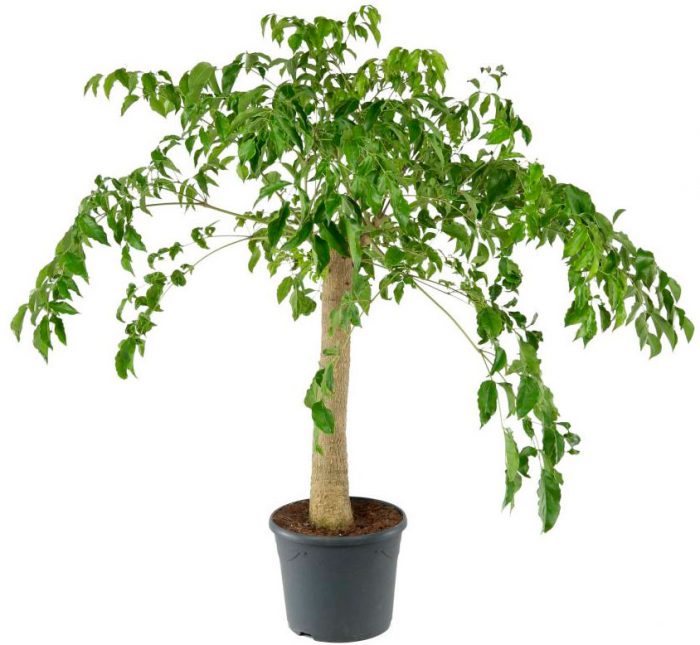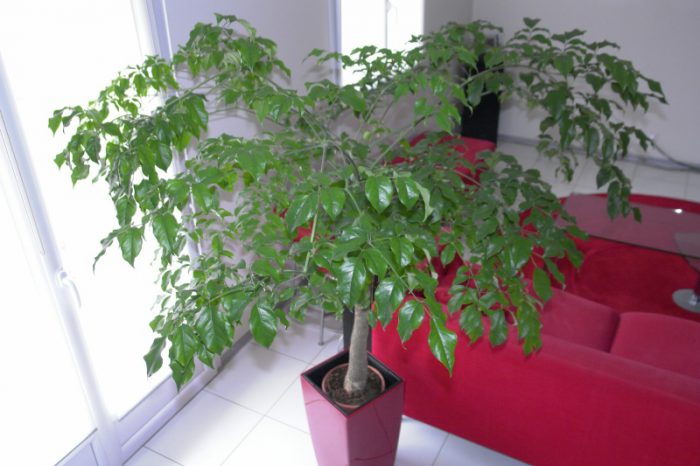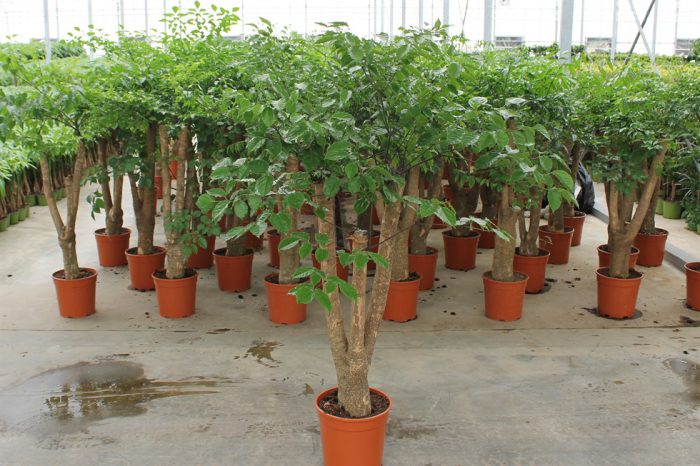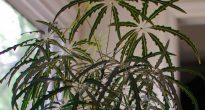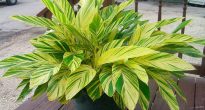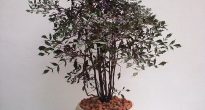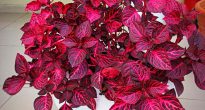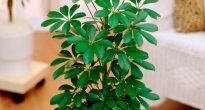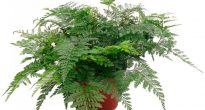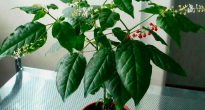Decorative leafy plant heteropanax (Heteropanax) belongs to the Araliaceae family. It comes from the countries of Southeast Asia.
This plant is a compact tree with a thin, distinct trunk and leafy crown. Cirrus, shiny leaf plates of a fairly large size are colored green. It is recommended to decorate a bright and large enough room with such a plant.
Content
Home care for heteropanax
Illumination
Needs good, bright lighting, but should not be allowed to be exposed to direct sunlight. It is recommended for placement to choose windows of east or west orientation. In winter, bright lighting is also needed, especially if the wintering is warm.
Temperature regime
The plant grows well and develops at a temperature not exceeding 25 degrees. A change in daily temperatures is recommended. In winter, experts advise moving the tree to a cool (no higher than 14-15 degrees) place. It is not recommended to place it near heating devices.
Humidity
Required high humidity. In this regard, it is recommended to systematically moisten the foliage from the sprayer, especially during warm wintering.
How to water
In the spring and summer, watering should be moderate. So, it is necessary to water the plant after several days have passed after the top layer of the substrate has dried (make sure that the earthy ball does not dry out completely). With the onset of the autumn period, watering is reduced. In winter, it should be sparse, especially during cold wintering. Watered with soft and well-settled water at room temperature.
Top dressing
Top dressing is carried out from March to September 1 time in 4 weeks. To do this, use fertilizer for indoor decorative deciduous plants. In autumn and winter, fertilizers are not applied to the soil.
Transplant features
The transplant should be carried out in the spring. Young plants are subjected to this procedure once a year, and adults - once every 2 or 3 years. Suitable soil should be light, loose and slightly acidic. To prepare the soil mixture, it is necessary to combine humus and sod soil, as well as coarse sand, taken in a ratio of 1: 2: 1. Purchased soil for decorative leafy plants is also suitable. Do not forget to make a good drainage layer at the bottom of the container.
Reproduction methods
Can be propagated by cuttings, seeds, and air layers.
Pests and diseases
Can settle aphid, spider mite or shield.
Possible problems
- Yellowing and death of foliage - poor lighting, too hot in summer, too cold in winter, stagnant water in the soil.
- Loss of turgor by foliage - poor watering.
- The foliage has lost its turgor and became translucent or pale - excessive watering.
- The foliage turned pale and faded - poor lighting.
- Light specks form on the surface of the foliage - intense lighting, sunburn.
- The tips of the leaves turned brownish - low humidity.
- Weakened shoots Poor lighting, needs feeding.

